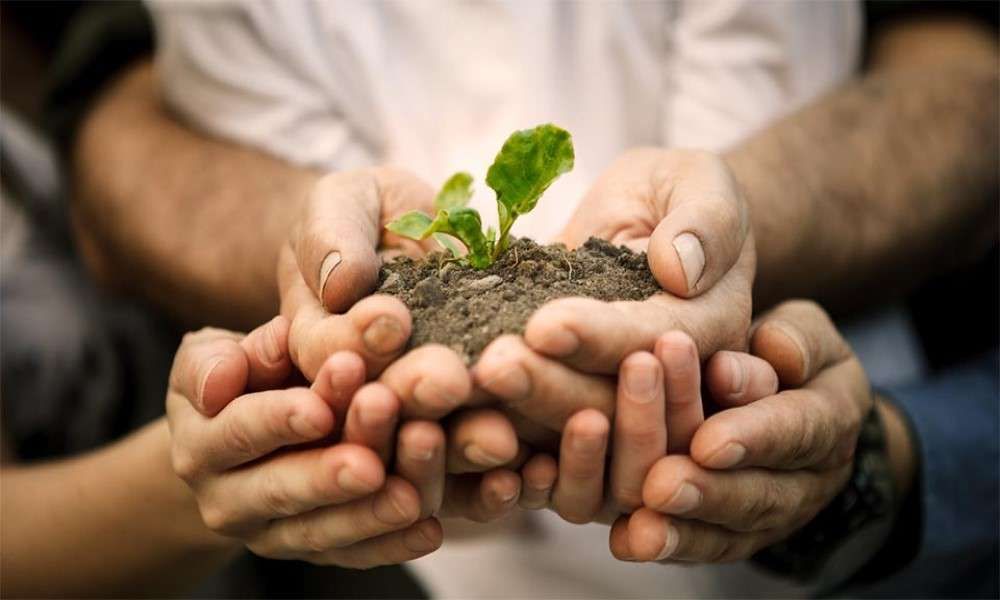Why You Should Help a Farmer by Planting Trees
Since its inception, Project GreenHands has planted 18 million trees, mainly in farmlands in South India. This isn’t just a matter of convenience or coincidence. There is method and reason behind it.

Since its inception, Project GreenHands (PGH) has planted 19.7 million trees, mainly in farmlands in South India. This isn’t just a matter of convenience or coincidence. There is method and reason behind it.
The livelihood of a farmer
According to the Government of India’s estimates, on average, since 2001, a farmer has committed suicide every 30 minutes. National Crime Records Bureau records show that at least 284,694 Indian farmers have taken their lives since 1995. Poverty and debt coupled with changing climate patterns, soil erosion, and lack of market savvy take a debilitating toll on a farmer’s lot. Buffeted on all sides by forces beyond his control, the individual farmer is often driven to the point of desperation, ending his own and his family’s life. An average Indian farmer has one of the smallest carbon footprints on the planet. But he faces great tribulations because of global warming.
The environment
About 32% of India’s land area or 105.48 million hectares is undergoing land degradation. The situation is only getting worse every day. Sadhguru says if nothing is done in the next 5 to 10 years, no amount of money or effort will be able to bring back soil quality and trees.
Because trees are cut without considering the consequences, the fertile, nutritious topsoil is washed away in rainfall water runoff. This is a great loss to Indian farmers who often depend on the natural fertility of the soil to grow their crops.
How trees help
By planting two rows of trees along the boundary of the farm land, (which occupies less than 15% of the farm area), trees offer many benefits to the farmer and the environment.
Subscribe
- They drastically reduce soil erosion due to heavy rains.
- The trees reduce the velocity and temperature of winds blowing into farm, which reduces water evaporation loss. This allows for a direct saving on the quantity of water required for the farm.
- There are around 40 species of birds in India that feed on pests. By creating a habitat for birds, we indirectly reduce the cost of pesticides and insecticides for the farmer.
But for a farmer, it is also important that he derives some direct economic benefit by planting trees. Let’s look at these.
There are three varieties of trees that PGH plants.
- Fodder trees, which grow fast and provide cattle fodder. Farmers can harvest a large amount of the tree’s biomass as cattle feed.
- Fruit trees which takes care of important nutritional requirements of the farmer’s family. Excess fruits can also be sold in the market, adding to a farmer’s income.
- Timber trees are the most important component of PGH’s tree plantation in farmlands and constitute more than 70% of the trees planted. Timber trees become a life insurance for farmers. The project ensures that each farmland has multiple types of timber, which allows for different species to be cut every seven years. Over a period of 15 years, these timber trees can be a valuable lifeline for farmers in emergency situations.
- Additionally, pepper plants are given to farmers, which are grown using the trees as a support for the pepper vine. A healthy pepper plant can yield an average revenue of Rs.300 to Rs.400 per year.
Why plant trees if they will be cut?
To save the evergreen forests. Only 7% of the planet’s land area consists of evergreen forests. But they contribute a significant percentage of the oxygen turnover on the planet. If we do not produce the timber required for human consumption in cultivable land areas, we will be forced to cut trees from the evergreen forests.
Why plant trees in India?
Trees do sequester carbon dioxide everywhere, but it is a lesser known fact that trees are more likely to trap heat in in upper latitudes. If trees are planted around the earth's equator, they are much more efficient at combating climate change. In fact, planting too many trees in mid or high latitude locations may actually increase global warming as the benefits of carbon sequestration are offset by the heat-trapping effect close to ground level.
India’s temperate climate makes it an ideal place for carbon sequestration to have a positive impact on environment. Besides, the cost of planting trees in India is far lower than in many other countries. Most of the population is from a direct farming background and consequently also own part of the land. Thus the survival of trees is ensured.
Why Project GreenHands?
Project GreenHands (PGH) plants and nurtures your trees, and lets you track the exact location of your tree and the name of the farmer who is growing it. See your trees grow for Rs.100/$2 per tree, which includes post-planting care and re-plantation if required.
PGH is an initiative recognized by the UN Environment Program. It has also been awarded the Guinness World Record for the most number of trees planted in 3 days. Other than plantation, the project works towards creating environmental awareness and eco-consciousness in the society.
Be a Greenie. It's just a click away
Editor’s Note: Follow PGH on facebook.



